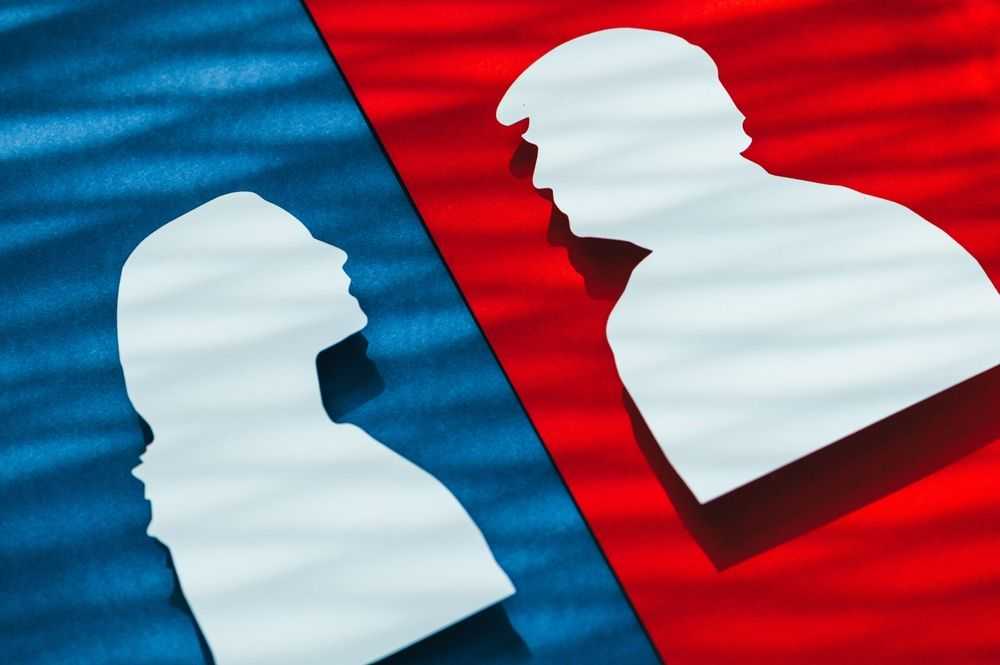Home>The Shifting Electoral Coalitions in American Presidential Politics

08.11.2024
The Shifting Electoral Coalitions in American Presidential Politics
By Kevin Arceneaux, Director of the CEVIPOF and Professor of Political Science, Sciences Po
The United States has a peculiar party system. Across the world, most countries have more than two political parties at the national level. Even countries that have similar electoral systems, such as Canada or the United Kingdom, have more than two parties at the national level. Yet, the United States has for almost its entire history had a two-party system at the national level. The reason for this peculiarity is that the president is chosen via an Electoral College in which the winning candidate must win an absolute majority of the electors. This rule means that only two parties can viably compete from election to election.
Consequently, the American Electoral College system creates two large political parties that must put together a broad coalition of different groups of voters in order to win the presidency. While there is some degree of stability from election to election with respect to the composition of these coalitions, they do shift and drift; and from time-to-time, they realign and redraw the battle lines of electoral politics. For instance, until the 1970s, white voters living in the southern states (the former states of the Confederacy during the Civil War) consistently voted for the Democratic candidate in presidential elections. Yet, after the 1970s, white southerners drifted into the Republican camp in the wake of Civil Rights legislation championed by northern Democrats in the 1950s and 1960s.
Until the 2016 election, the Democratic Party was a broad coalition of voters from racial and ethnic minority groups (black, Latino, and Asian) along with liberal-minded white voters. This coalition could reliably produce victories in key states in the Northeast and Midwest along with the populous states along the east and west coasts. The Republican Party built a coalition of well-off white voters along with highly religious and conservative voters, giving them a lock on states in the deep south and the interior west and central plain states.
It would seem that Donald Trump has disrupted these coalitions. Beginning with the 2016 election, Democrats lost their edge among voters without a college education and have gradually seen an erosion in support among minority voters, notably Latinos who tend to be more conservative than the members of other minority groups. As Figure 1 shows, the 2024 election is notable in that it is the first time that a majority of wealthy voters (those who make more than $100,000 a year) supported the Democratic candidate, while less well-off voters were more likely to vote for Trump. From 1996 to 2020, voters who make less than $50,000 a year were overwhelming likely to support the Democratic candidate, between 53% and 63%. In 2024, a minority (47%) voted for Kamala Harris.
Whether the inversion of the relationship between income and the Democratic vote share is an aberration or the marker of a new trend remains to be seen. Nonetheless, it is clear that Donald Trump appeals to a new group of voters, and in doing so, he has expanded the Republican coalition, while chipping away at the foundations of the Democrat’s. If this trend were to continue, it could mark a realignment of the party system such that the Republican party becomes the party of working-class economic populism (protectionism, small-town values, anti-elite), while the Democratic party becomes the party of cosmopolitan, big business, and liberal markets. Such a shift is not unthinkable, as it would represent a 180-degree shift from the parties’ policy positions as the existed in the late 1800s and early 1900s in which the Democratic Party represented small-town economic populism and the Republican Party represented the big-city cosmopolitanism of its time. Whether this shift comes about remains to be seen and depends a great deal on whether Republicans in the US Congress are willing to embrace fully the economic populist agenda of Trump’s American First vision.

